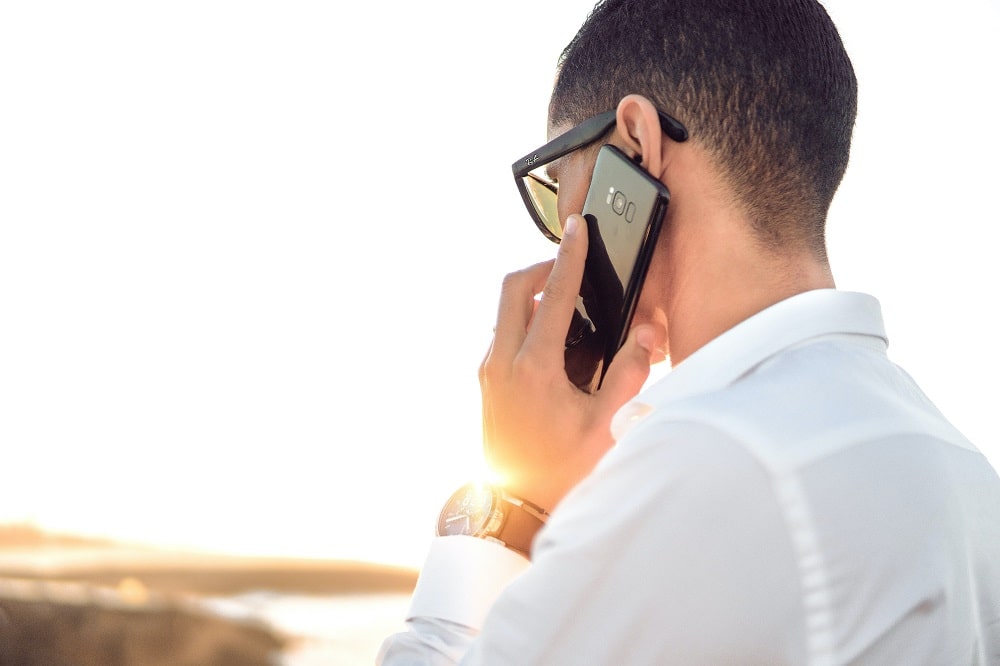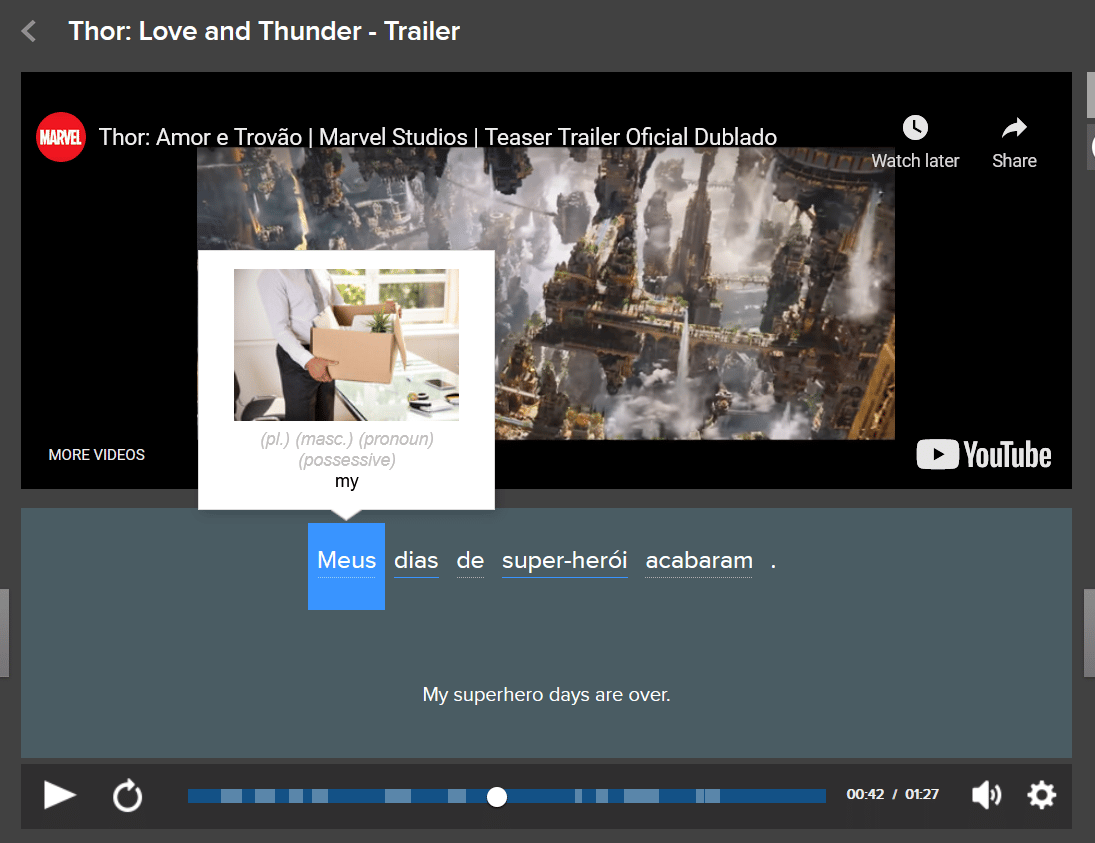
“Hello” in Portuguese: 25 Greetings for Any Situation
There are so many different ways to greet someone by saying “Hello,” “Hi” and “How are you?” in Portuguese.
Olá (hello) is used in Brazil and Portugal, while oi (hi) is mostly used in Brazil and you might hear viva! (hello) in Portugal.
These are just the basics, but there are many other Portuguese greetings for connecting with native speakers and starting a conversation.
In this post, you’ll find 25 common Brazilian and European Portuguese greetings to use in any situation, from formal or informal encounters to letters and emails!
Contents
- Basic Ways to Say “Hello” or “Hi” in Portuguese
- How to Say “Hello, How Are You?” in Portuguese
- Hello in Portuguese for Different Times of Day
- How to Answer the Phone in Portuguese
- Greetings for Letters and Emails in Portuguese
- Bonus: How to Say “Goodbye” in Portuguese
- How to Learn to Say Hello in Portuguese
Download: This blog post is available as a convenient and portable PDF that you can take anywhere. Click here to get a copy. (Download)
Basic Ways to Say “Hello” or “Hi” in Portuguese

Olá — Hello
Used by European and Brazilian Portuguese speakers alike, olá is a slightly more formal way of saying hello, and the safest option when you’re greeting someone you don’t know very well.
Not only is it suitable for many situations, but its pronunciation doesn’t change at all across Portuguese-speaking countries.
Oi — Hi
Oi is a casual, informal way to say “hi” that’s mostly used in Brazil. You might hear it from time to time in Portugal as it’s becoming more widespread, although Portugal tends to favor the use of olá.
Oi is often used both orally and in writing, especially when texting, on Whatsapp, on social media and any other informal means of communication.
Viva! — Hello
A common, slightly more formal way to greet people in Portugal: Viva, amigos! would be like saying “hello, my friends!”
The word viva is literally translated as “live” or “long live” (as in “long live the king”— viva o rei ), but the Portuguese use it as a way to wish good health to the person being greeted.
How to Say “Hello, How Are You?” in Portuguese

Like in English, Portuguese speakers have their own formal and informal variations of asking “How are you?”
Tudo bem? / Tudo bom? — Everything well? / Everything good?
This is the most common informal manner of asking “How are you?” in Brazil. It’s also used in Portugal to greet family members and friends.
There’s a slight difference in pronunciation between Brazilian and European Portuguese:
Brazilian: Tudo bem?, Tudo bom?
European: Tudo bem?, Tudo bom?
Here are some possible ways to respond:
• Eu estou bem, e você? or Tudo, e você? (I’m good, and you?)
• Bem, e você? (Good, and you?)
• Estou bem, obrigado (I’m good, thank you). *If you’re female, use obrigada.
Como está? / Como estás? — How are you?
In Como está?, the verb estar (to be) is conjugated according to the você form of “you,” while Como estás? uses the tu form.
You’ll hear Como está? in informal situations in Brazil and very formal situations in Portugal, and Como estás? in informal situations in Portugal.
Listen to the difference in pronunciation here:
Brazilian: Como está?, Como estás?
European: Como está?, Como estás?
These greetings are regularly used as a way of saying hello, and as such don’t always warrant a reply, like “How’s it going?” in English.
Como vai? — How’s it going?
Como vai? (how’s it going?) is mostly used in Brazilian Portuguese in informal situations. Sometimes you may hear this phrase include você, for example: Como você vai? or Como vai você? , but this is optional as vai is already conjugated in the você form.
Like the phrases above, depending on the context a response isn’t always necessary. If you want to reply, you can simply say Estou bem, e você? (I’m good, and you?)
E aí? / Beleza? — What’s up?
These are two ways Brazilian Portuguese speakers say “what’s up?” Don’t try to translate it literally as these are quite slangy terms.
Beleza literally means “beauty” and can be used in many different contexts, such as asking “How are you?”— like saying “All good?” in English. Both greetings can easily be answered with beleza (All good).
Como é que é? — What’s up?
In Portugal, you may hear some young people use this question to informally ask what you’ve been up to. It literally translates to “How is it?”
Tá tudo? / Tás bom? — Are you well?
These are two slang phrases for saying “are you well?” in European Portuguese. They’re best left for friends only as they’re quite informal.
Portuguese speakers often use this as a way of saying “hi,” without expecting any answer in return. Still, you could answer with Tudo bem (I’m good) or Tudo (same but condensed) if you feel the context calls for it.
Tem passado bem? — Is everything good?
This is a formal greeting used in European and Brazilian Portuguese that literally means “Have you been passing well?” This greeting could be used with an old colleague that you haven’t seen in a while or perhaps with someone you know but aren’t too familiar with.
Another way of saying this is by asking Como tem passado? This option is slightly more formal and is often used in Brazilian soap operas.
To respond to these phrases, you can simply answer by saying Sim! E você? (Yes! And you?). Alternatively, you could respond with Bem (Good) or Muito bem! (Very good!).
Bem-vindo — Welcome
In the Portuguese language, most verbs, nouns and adjectives have to adapt to both the number (singular or plural) and gender (male or female) of whatever they’re referring to.
To make matters worse, even if you have a group of five women and only one man, you’ll still have to refer to that group as male.
For that reason, the word bem-vindo will be found in several forms. Luckily, this greeting is pronounced the same across Portuguese-speaking countries:
• Bem-vindo — for a man
• Bem-vinda — for a woman
• Bem-vindas — for two or more women
• Bem-vindos — for two or more men or a mixed-gender group
Hello in Portuguese for Different Times of Day

Depending on the time of day, you might say hello to a Portuguese speaker in the following ways (used in both Brazilian and European Portuguese):
Bom dia — Good morning
Bom dia literally translates as “good day” and can be used to say “good morning.” Use this between 6:00 a.m. and noon.
Notice that bom dia is pronounced “bom GEE-a” in Brazil—in Portugal and African countries, it’s said as “bom DEE-a” instead: bom dia .
You can repeat the greeting as a response, or add a “How are you?” to it:
Bom dia, tudo bem? (Good morning, how are you?)
Boa dia, como vai? (Good evening, how are you?)
Boa tarde — Good afternoon
Use boa tarde as a greeting from noon until about 7:00 p.m. to say “good afternoon.”
In Brazil, this expression will sound like “boa TAHR-g,” while in Portugal it sounds like “boa TAHR-d”: boa tarde. Once again, Angolan Portuguese pronunciation would come closer to the European version of this greeting, as would Cape Verdean and Guinean pronunciations.
Boa noite — Good evening/Good night
Boa noite means both “good evening” and “good night” (there’s no distinction between the two in Portuguese). Use this phrase to greet someone from 7:00 p.m. onwards.
These phrases are typically used in more formal situations where olá might be deemed too casual, or as a generally more polite greeting.
In Brazil this phrase is pronounced “boa NOEE-tsh,” and in Portugal, Angola, Cape Verde and other Portuguese-speaking African countries it sounds like “boa NOEE-t”: boa noite .
How to Answer the Phone in Portuguese

There are several different ways to answer the phone in Portuguese. This is one of those instances where you’ll see a marked difference between the Brazilian and European Portuguese dialects.
Alô? — Hello?
In Brazil, the most common way to answer the phone is with Alô? (Hello?).
The other person will usually answer back with the same interjection, and maybe ask who’s speaking: Quem é? (Who is it?) or Quem tá falando? (Who’s speaking?).
Está lá? / Estou — Are you there? / I am [here]
In European Portuguese, a person will either answer with Está lá? (Are you there?) or most often simply with Estou (I am [here]).
The other speaker will typically respond with Estou or Estou sim (Yes, I am [here]); sometimes they may reply with Fala (the imperative form of falar, the verb “to speak”) or simply olá (hello) or sim? (yes?).
Greetings for Letters and Emails in Portuguese

If you’re writing an email or a letter to someone, the greetings you choose to start and end your message with will depend on the level of formality required and your relationship with the person you’re writing to.
Here are a few examples of common greetings used in European and Brazilian Portuguese:
Querido / Querida — Dear…
Querido/querida can be used both in spoken and written informal Portuguese. It’s a term of endearment used all over the Portuguese-speaking world and would be translated as “Dear” for male and female, respectively.
You can begin any informal letter or email to a friend, family member or pen-pal with Querido/a... For example: Querida Maria, Querido José…
Estimado… / Caro… / Prezado… — Dear…
If you’re writing a more formal message in European or Brazilian Portuguese, go for polite salutations such as estimado, caro or prezado. These are the equivalents to “Dear Mr./Mrs.” or “Dear Sir/Madam,” and are followed by the person’s full name or last name.
Remember that there are several variations of the same salutation depending on the gender and number of the audience:
• Estimado — singular male
• Estimada — singular female
• Estimados — plural male or mixed group
• Estimadas — plural female
The same logic applies to the others:
• caro, cara, caros, caras
• prezado, prezada, prezados, prezadas
Atenciosamente / Cordialmente — Sincerely, Best regards / Cordially
These are the friendliest expressions one could use to finish a formal letter or email. These don’t need to be adapted to number or gender, and they’re understood throughout the Portuguese-speaking world.
If you were to use these expressions orally, you would need to say “atenSEEOH-zamentsh” in Brazil or “atenSEEOH-zament” in Portugal: atenciosamente . Likewise, Brazilians would say “cohr-dee-ALmentsh” (Brazil) but Portuguese would say “cohr-dee-ALment”: cordialmente .
Bonus: How to Say “Goodbye” in Portuguese

When it’s time to go your separate ways, this is how Portuguese speakers say goodbye:
Tchau — Bye
Pronounced just like ciao in Italian, this is the most common way Brazilians say goodbye to each other. Tchau is also sometimes heard in Portugal, but it’s more commonly used in Brazil. To respond, just say tchau back.
Note that, unlike ciao in Italian which is used to say both “hello” and “goodbye,” in Portuguese, tchau is only used to say goodbye.
Adeus — Goodbye
This is another form of saying goodbye, commonly used in Portugal but seen as very formal in Brazil. Speakers of Brazilian Portuguese may even see it as over-dramatic at times.
While it’s a popular farewell in Portugal, in Brazil it’s reserved for very formal situations, such as when you’re unlikely to see the other person for quite a long time.
Tenha um bom dia — Have a good day
This is a time-specific goodbye, allowing you to wish someone a good day. You’re most likely to hear this used up until midday or 1:00 p.m in Brazil or Portugal.
In response, you can either say Tenha um bom dia também (Have a good day too) or, depending on whom you’re addressing, a simple para você também (literally: to you too) will suffice.
Tenha uma boa tarde — Have a good afternoon
After midday, this phrase is used in both Brazilian and European Portuguese.
Like the phrase listed above, to respond to this goodbye you can say Tenha uma boa tarde também . You could also add obrigado or obrigada (thank you) before responding.
Tenha uma boa noite — Have a good evening
Most native speakers will tend to use this phrase from 7:00 p.m.
Like the two phrases listed above, most people will often reply by repeating the exact phrase and adding também (too), or say para você também (to you too). Another common reply to these three phrases is igualmente which is used to say “you too.”
Até mais / Até logo / Até breve — See you soon
These are different ways of saying “see you soon” used by both European and Brazilian Portuguese speakers.
For a slightly more formal alternative, use the phrase Até mais tarde or Até logo mais (both mean “See you later”). You can respond by echoing any of these greetings, or simply by saying Até (Until then).
Até amanhã — See you tomorrow
Like its equivalent in English, this phrase isn’t considered particularly formal or informal, so it can be used in most situations in both European and Brazilian Portuguese.
It’s important to know how to pronounce these two very typical Portuguese sounds as they are also used in many other Portuguese words:
- “nh” — this is pronounced the same as the Spanish ñ, which in English is very close to that nasal “n” sound you make when you say the word “wing,” “thing” or “ring”
- “ã” — this sound is basically an extremely nasal version of the letter “a”
Abraço — Hug
Abraço literally means “hug,” and it’s often used in informal Brazilian and European Portuguese writing, such as when finishing a conversation in a chat, a friendly email or a letter to someone you’re familiar with.
It would be equally suitable for finishing a phone call.
Beijinho — Lit. “Little kiss”
Perhaps one of the sweetest things about the Portuguese language is how it uses -inho or -inha. These are added at the ends of nouns or even names to indicate endearment, as well as something of a small size.
That’s the case with beijo (kiss) as it becomes beijinho (little kiss), to mean a very sweet, quick kiss as a greeting.
Most would use this at the end of a phone call, but it can also be used in writing to end an informal conversation in both European and Brazilian Portuguese. Alternatively, you could use beijinhos (kisses).
How to Learn to Say Hello in Portuguese
Now that you’ve learned these greetings in Portuguese, it’s time to start practicing them! Here are some ways to practice on your own before you start using them with other people.
- Use flashcards to memorize these essential words and phrases. You can use this collection from Quizlet or a convenient flashcard app for your smartphone or tablet.
- Use an online dictionary like Forvo or Linguee to search for greetings and hear them spoken in the dialect you’re learning. Play them back a few times and repeat them to practice your pronunciation and commit the greetings to memory.
- Play online games to test your knowledge. For instance, Digital Dialects has one for basic phrases in Brazilian and European Portuguese that covers essential greetings and allows you to listen to audio.
- Consume Portuguese content to get exposed to the natural use of these greetings. The FluentU program has authentic videos in Portuguese like movie trailers and clips from TV shows to give you plenty of context. Plus, you can turn on the interactive captions in Portuguese and/or English.
This will allow you to check the definition of any word at a click without leaving the video player. In addition, you can study new vocabulary with personalized quizzes that adapt to your learning.
- Get talking! If you’re feeling a bit shy, start with some online interactions. You can easily connect with Portuguese speakers through language exchange apps like HelloTalk, Tandem or Speaky.
For offline exchanges, use a social media platform like Facebook or Meetup to find Portuguese speakers and learners in your area and see if any language exchanges or meetups are coming up. You could even offer to organize your own!
You can find plenty of other resources online for extra practice, like this YouTube video:
With all of these Portuguese greetings and practice tips, you’re well on your way to greeting others in Portuguese with confidence and ease.
Boa sorte! (Good luck!)



